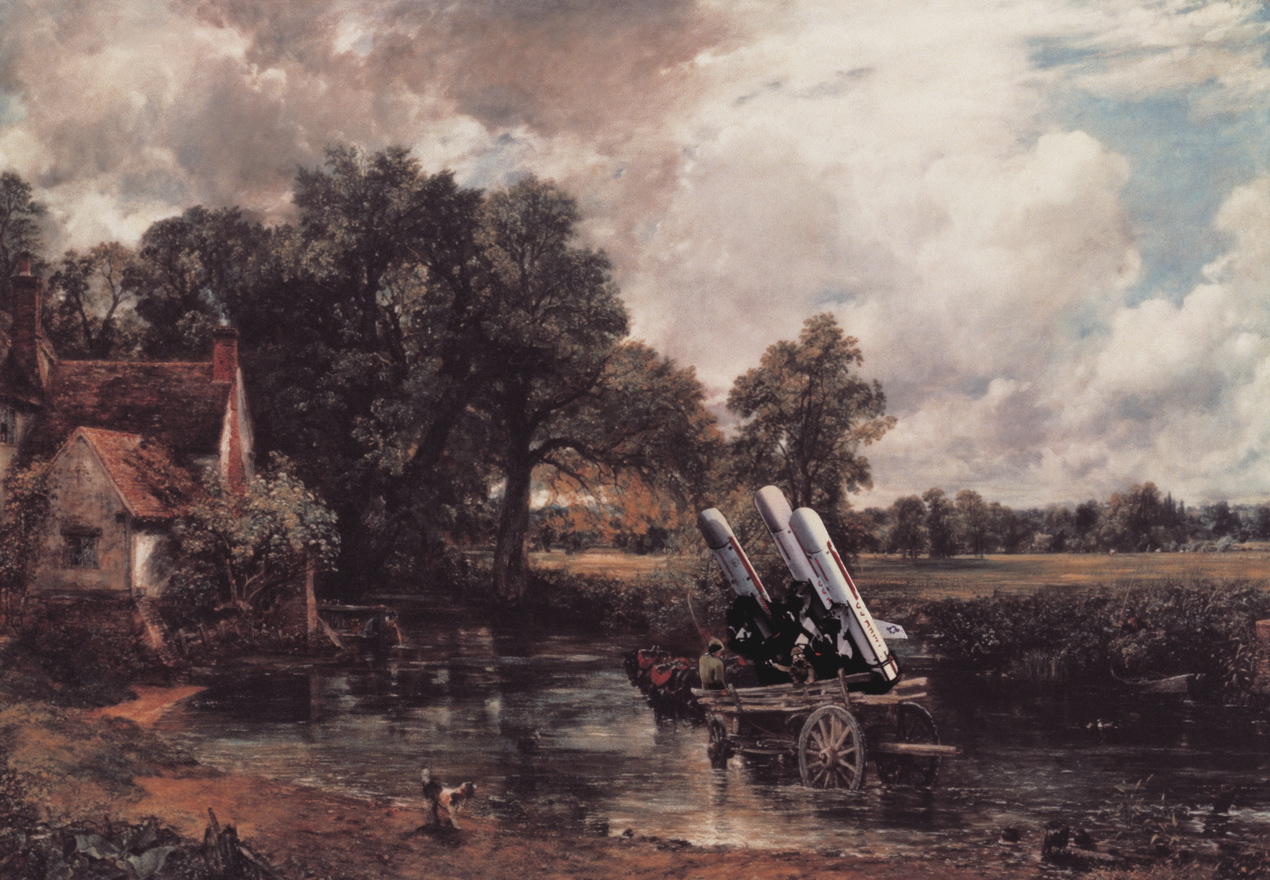Peter Kennard: cut and paste
Peter Kennard’s work was bought by the Imperial War Museum and hangs in the Tate. But don’t let that fool you into thinking the leading political artist is now in any way establishment
A remote atoll in the middle of the Pacific Ocean is an unlikely location for one of the most significant events in British politics and culture.
Off the uninhabited island of Malden on 15 May 1957 an RAF Vickers Valiant detonated a hydrogen bomb, sending a mushroom cloud 40,000ft into the air and making Britain a nuclear power. The government initially covered up its H-bomb tests, but when the news broke public outrage led to the founding of the Campaign for Nuclear Disarmament and appearance of the now familiar ban the bomb peace symbol.
This year CND is celebrating its 60th birthday, and many of the powerful images associated with the movement are the focus of a major exhibition in Sheffield. They are by Peter Kennard, one of Britain’s leading political artists, who started producing radical paintings and photomontage after his involvement in the 1968 anti-Vietnam war demonstrations while a student at London’s Slade School of Fine Art. Although his work was not well received by the college – it placed his degree show next to toilets in the basement – 10 of the paintings were later bought by the Imperial War Museum.
Among the works on show at Sheffield is Hay Wain with Cruise Missiles from the V&A collection, a subversive montage of three nuclear warheads inserted into the idyllic East Anglian countryside of John Constable’s 1821 oil painting The Hay Wain.
“That Constable is the classic painting of rural Britain, and I wanted to completely transform it,” Kennard tells Big Issue North. “The basis of montage is you start with two things, but by putting them together you create a third meaning,” says the artist whose work sits on a line between the early 20th century Dada movement and the easily achievable digital image manipulation of today.
“Well, back in the early 1980s Cruise missiles were arriving at Greenham Common and we were told the mobile missile launchers would circulate for 50 miles around. ‘But don’t worry,’ the government said. ‘They’ll melt into the countryside.’ Those words inspired the image. I wanted to make people aware this was going on.”
Another striking photomontage on show is one of Kennard’s best-known, Broken Missile, which normally hangs in the Tate. It depicts a nuclear warhead cracked in half by the CND symbol. Kennard said he bought a toy missile at a toy shop in London, smashed it in two with a hammer and took a photograph.
A later work, Photo Op, produced with collaborator Cat Phillips, has done as much as anything to excoriate Tony Blair for Britain’s Iraq War involvement. It superimposed a grinning Blair, captured as he took a phone selfie against an apocalyptic background of flames and black smoke belching from an Iraqi oil well.
Kennard says: “The Blair selfie was originally a New Labour publicity shot. Photo Op now appears in the media whenever Tony Blair dares to raise his head above the parapet, so much so that it’s high in his Google rankings, which must annoy him greatly.”
In 2005 Kennard began a series of photomontages depicting the doomsday clock set each year in the Bulletin of Atomic Scientists. When CND was launched in 1958 following Britain’s first H bomb test it was put at two minutes to midnight, suggesting the world was close to catastrophe. The clock’s hands slowly went back because of peace initiatives but, after the election of Donald Trump as US president, for the first time in decades the clock – as shown in another Kennard montage at Sheffield – is back at two minutes to midnight.
One question asked during CND’s 60th year is whether the movement has made a difference? There are vastly more nuclear warheads than in 1958, while other nations like France, Israel, India, China and North Korea have joined the nuclear club. Were Kennard’s images in vain?
“I’d say there have been successes, like the women’s camp at Greenham Common and the UN ban on nuclear weapons,” he says. “But if you’re making art about it you can’t measure the effect, like if you were in advertising you would know how many extra bottles of soap suds you had sold. With political work it’s all about consciousness.”

Leave a reply
Your email address will not be published.